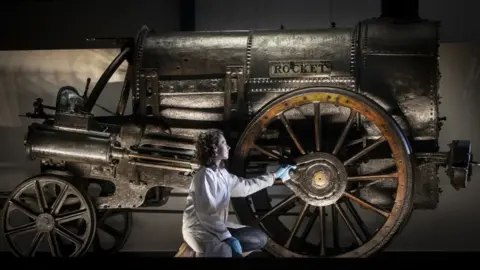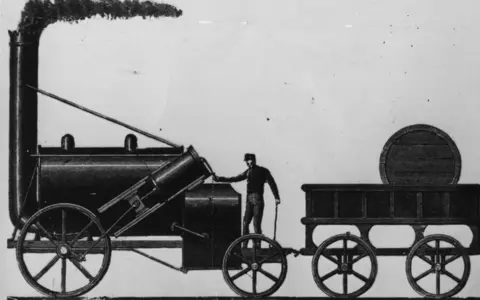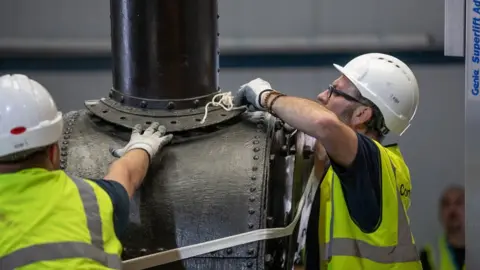Stephenson's Rocket returns to York's National Railway Museum
 PA Media
PA MediaThe world-famous Stephenson's Rocket is to go on show at the National Railway Museum for at least 10 years.
The original 1829 early steam locomotive is to be displayed at the York museum from Thursday.
The engine ran on the world's first inter-city passenger railway in 1830 and helped to usher in the railway age.
It has been installed in a purpose-built room in a former goods shed at the museum.
 Getty Images
Getty ImagesIt will joins other famous steam locomotives on show at the museum, including Mallard and the Flying Scotsman.
The Rocket, which was designed by early English railway and civil engineer Robert Stephenson, was last on display at the museum 20 years ago.
Its latest stay is expected to last for at least a decade, the museum said.
It was the only locomotive to successfully complete the Rainhill Trials in 1829, achieving a top speed of 30mph (48km/h) and demonstrating steam-powered locomotives were suitable for widespread use.
Anthony Coulls, of the museum, said: "Rocket was not the first steam engine, but it is certainly one of the most significant and it combined all the technological innovations available at the time to create one engine that was faster and more reliable than anything seen before."
 Charlotte Graham
Charlotte GrahamThe National Railway Museum has the largest collection of railway objects in the world, including 260 locomotives, and attracts more than 750,000 visitors annually.
The Rocket forms part of a new exhibition called Brass, Steel and Fire, and its stay in York forms the final leg of its Science Museum Group tour which has also seen it displayed in Newcastle and Manchester.
The free exhibition tells the story of the first 100 years of railway models.

Follow BBC Yorkshire on Facebook, Twitter and Instagram. Send your story ideas to [email protected].
